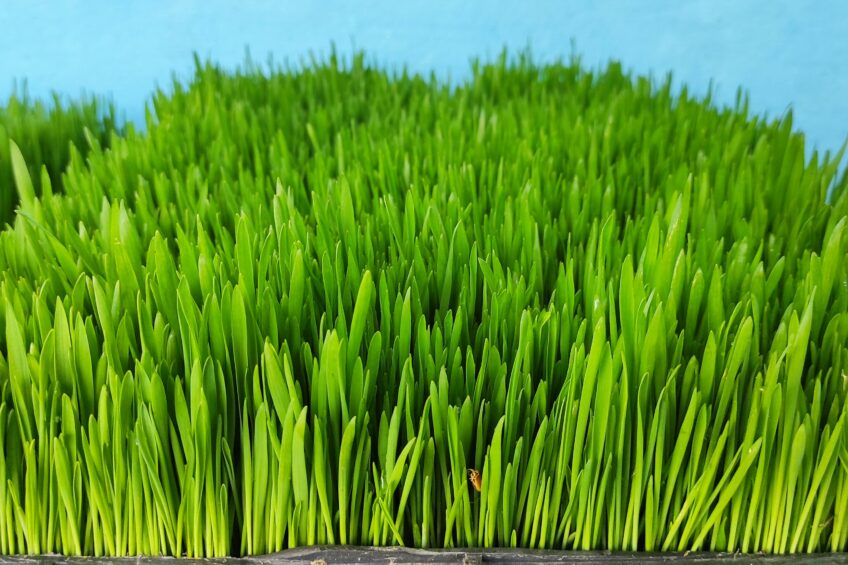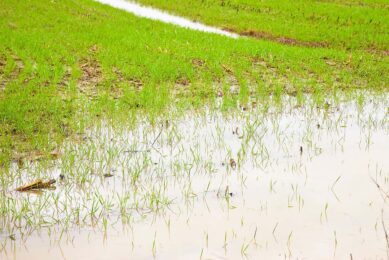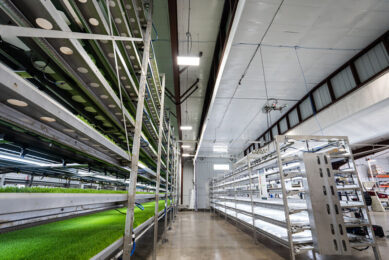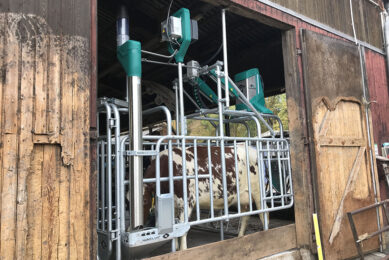What is the future for hydroponic fodder systems for dairy cows?

Farmers around the world are struggling with nutritional and economic challenges for their dairy herds as commodity prices continue to surge, coupled with environmental fluctuations such as harsh droughts that are making traditional forages unreliable.
In search of solutions, many farmers are turning to technology to grow nutrient-dense and affordable feedstuffs more effectively. One option that holds special promise is the use of hydroponic fodder systems, which have been a work in progress for some time and are now making their way onto more dairies.
Both academic research and on-farm applications over several years have delved into the strengths and weaknesses of such systems that use young, sprouted grains as a forage source grown indoors and without soil.
Where do hydroponic fodder systemscome from?
Using sprouted grains for livestock is not a new concept. European dairy farmers have used them since at least the 1800s to help cows maintain production and improve fertility through the winter months.
The methodology is very simple: keep grains clean and damp for several days until they germinate and begin to grow. This increases nutrient density compared to the method of feeding dry, hard grains (including barley, wheat and oats) straight to the animals. If done properly, the resulting sprouts at harvest will be 10 times the amount compared to the hard grains they came from.
Hydroponic fodder systems produce fresh forage daily. These forages can be of high quality, adding to the nutritional value of the feed source. For example, barley will start to germinate quickly, and the use of artificial light allows for maximal growth. This provides a consistent and fast supply of forage, according to 2019 research from the University of Malta titled ‘Cows fed hydroponic fodder and conventional diet: effects on milk quality’, which says that setting up this system is more sustainable than importing hay from other countries “as the cost of transport is expensive and the feed quality is inferior”.
The systems require a power supply and a potable water supply and have low operating costs with minimal labour requirements. Today, hydroponic fodder systems are married with technology and equipment that allows a steady flow of water to circulate the roots of the newly germinated seeds in climate-controlled facilities. This water can also include essential nutrients for optimal growth time.
While rising feed costs, reduction in farm ground and organic forage demand mean that this new way of growing fodder is generating interest, various factors such as start-up costs, labour, production challenges and economics are making it difficult for livestock operations to try it on a large scale.
Benefits and challenges
As with any other feeding system, the success or failure of hydroponic fodder systems in any given dairy operation depends on the available resources, finances, facilities and labour. One of the strongest advantages is the cost and nutritional density compared to commodities and traditional forages. According to company FodderTech, feeding sprouts offers an affordable option with costs varying from $0.03 to $0.05 per lb.
While more research needs to be done, farmers have reported lower feed costs per cow as well as increased revenue by weight, higher milk volume, increased fertility rates, lower involuntary cull rates and improved cow and herd health using hydroponic fodder systems. Farms with limited acreage or insufficient forage storage capacity may have some additional benefits.
Just as there are pros to these systems, there are inevitable drawbacks that make fodder challenging. For example, even in controlled environments, mold is still a serious issue that can impact yields. There are also different storage methods required for fodder as it is more delicate than silage or hay.
Skepticism about viability
There is currently a need for more research to fully establish the long-term effects of hydroponic fodder in dairy diets, especially when fed alongside other ingredients, and the impact on production, reproduction and overall herd health. Another key to determining its integration into the dairy industry is the complexity of systems and the resources needed to operate them such as lighting, power and infrastructure.
In an Iowa State University report Hydroponic Fodder Systems for Dairy Cattle? dairy specialist Larry Tranel cautions that hydroponic fodder may pose some nutritional challenges for ruminants compared to monogastric species with issues such as having less starch, more sugars and less nutritional availability. He also notes that unless there is a way to increase digestibility, this system may be too costly for large-scale conventional dairies.
Fodder system costs
“In sum, per pound of dry matter produced, the fodder system had a $0.045 cost for investment, $0.23 cost for labour, $0.12 cost for seed, and $0.01 cost for water, electrical and other for a total cost of $0.40 per pound of dry matter produced. This fodder cost can be compared to feeding good quality hay for $0.107 per pound of dry matter for good quality hay that has 13% less TDN,” Tranel writes.
“However, hydroponic sprouts may still have good application in organic, intensive, small-scale livestock with high value outputs or in areas with extremely high land or alternative feed prices. Organic dairies needing to feed very high forage levels year round that can produce their own seed for reasonable costs and have excess labour available, may have reason to experiment further with the hydroponic fodder system,” he adds.
Hydroponic fodder systems offer a promising solution to the nutritional and economic challenges faced by dairy farmers worldwide. These systems, which involve growing nutrient-dense forage indoors without soil, can provide a consistent and cost-effective source of high-quality feed for dairy herds.
While they do come with certain challenges, including start-up costs and nutritional considerations, they hold potential for improving feed efficiency, reducing expenses and enhancing overall herd health.
However, further research and adaptation of fodder technologies are necessary to fully assess their long-term viability and integration into the dairy industry. As farmers seek innovative solutions to navigate rising feed costs and environmental uncertainties, hydroponic fodder systems represent a valuable tool in ensuring the sustainability and resilience of dairy farming in an ever-changing agricultural landscape.










